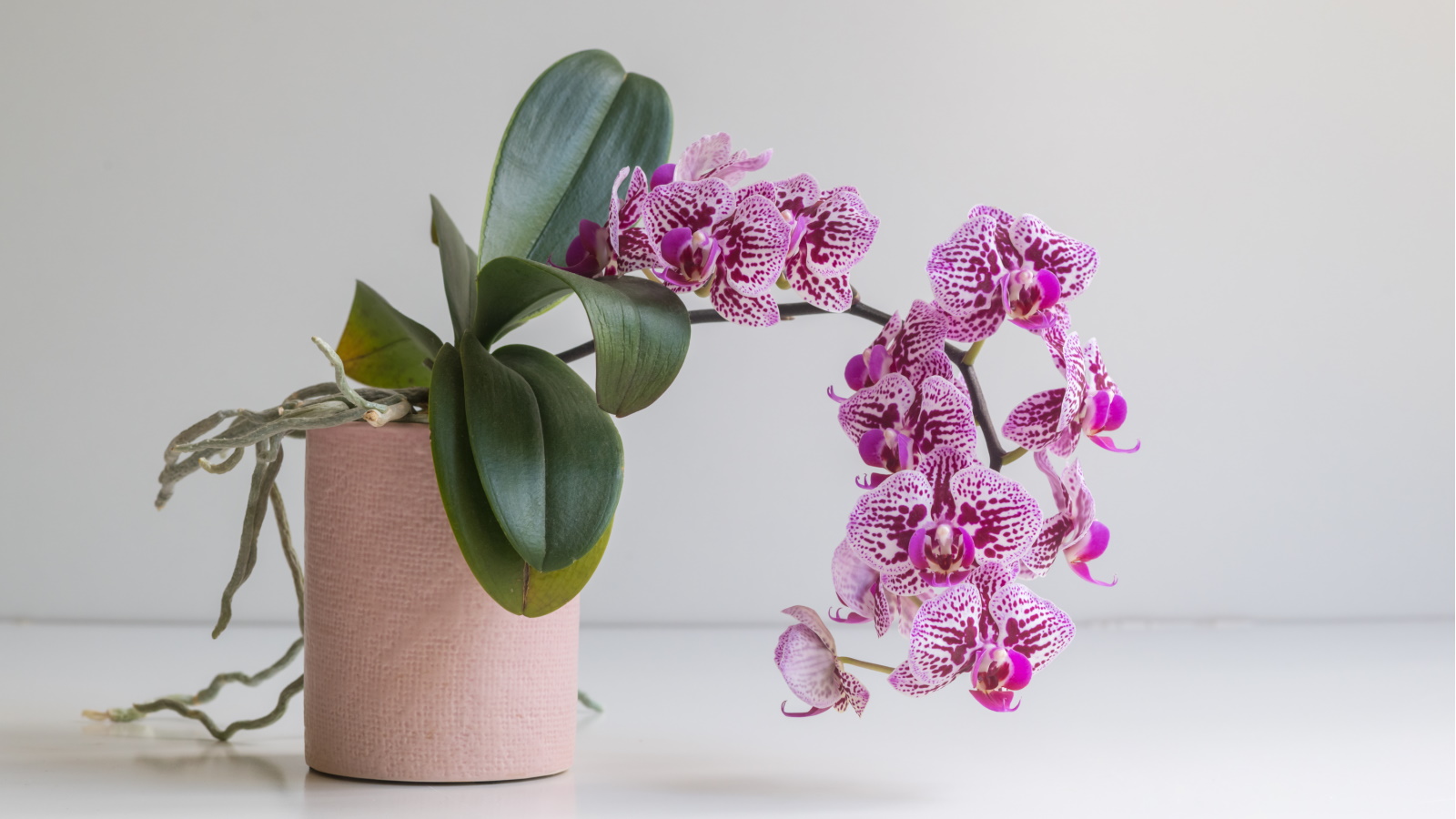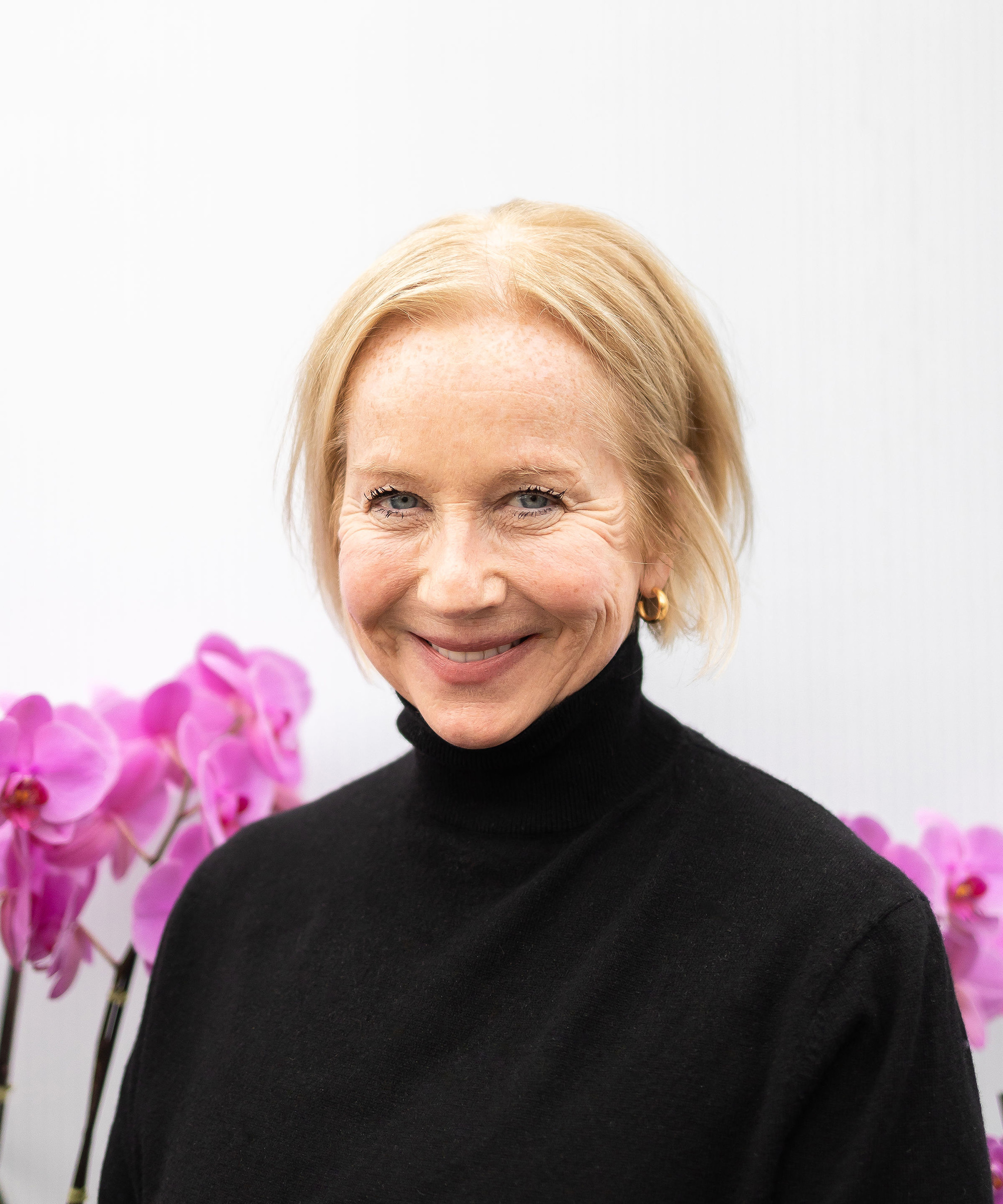What is orchid root rot? Expert tips on how to treat it to keep this exotic houseplant alive
You can tell a lot about orchid health by observing the color and firmness of its roots


I grow a handful of moth orchids among my ever-growing houseplant collection and they're all thriving quite happily. However, it has taken quite some time to be able to get to this point, as every indoor gardener knows orchids are not the easiest indoor plants to keep alive.
It's easy to make mistakes when caring for orchids, but it's all part of a learning process. I went from harming my white Phalaenopsis from incorrect watering to bringing my orchid back to life after two years of no blooms. One of the issues I encountered during this process was houseplant root rot.
Incorrect watering is the main culprit of killing off orchids and orchid root rot is not a rare sight for orchid owners. But don't worry, it's an easy issue to identify and rectify. Here's what experts have to say on the matter, with tips to treat orchid root rot.

What causes orchid root rot?

Orchid root rot refers to exactly what it sounds like - orchid roots rotting. It can have adverse effects on your orchid plants, from your orchid wilting to orchid flowers falling off and even your orchid stem turning yellow.
'You will know the roots are rotting because they will be squishy and rather than being green or silvery in color, they will be dark brown or black,' says Julie Bawden-Davis, indoor plant expert at Healthy Houseplants.
Learning about how orchid roots should look has helped me water mine correctly. Silver roots indicate it is time to water your orchid, while green roots mean it's at a happy moisture level. If you still water your orchid even when it doesn't need it, this can lead to orchid root rot. My houseplant watering regime has also been transformed by using a moisture meter, from Amazon, to identify when it's time to water my houseplants.
'It is important to understand how orchids live in their native habitat, as that gives you an idea of how you should treat your orchids in the home in terms of watering,' says Julie.
Design expertise in your inbox – from inspiring decorating ideas and beautiful celebrity homes to practical gardening advice and shopping round-ups.
'Orchids grow hanging upside down from trees in the rainforest. They are epiphytic, meaning they grow on other plants, rather than terrestrial plants that grow roots in soil. Not growing in soil, orchids get watered when it rains, but then the roots dry out in between rains.'
Other factors that contribute to orchid root rot include poor air circulation and a lack of drainage. It's best to use orchid potting mix, available at Amazon, for orchids as potting soil is too dense and will hold on to excess moisture. Likewise, a lack of airflow for your orchid can cause a build-up of humidity and fungal issues. You can try making your own orchid potting mix to create the perfect growing environment.

Julie Bawden-Davis is a garden author and University of California Certified Master Gardener, who has written several gardening books, including Indoor Gardening The Organic Way. In addition to running HealthyHouseplants.com, she shares indoor gardening advice on her YouTube channel @HealthyHouseplants.
How to treat orchid root rot

If you do observe orchid root rot, don't panic. It doesn't necessarily mean there's no hope. You can take a few steps to revive your orchid and return it to health.
The first thing you need to do is carefully take your orchid out of its pot and get rid of its potting mix. It's best to repot your orchid with fresh potting mix to ensure no fungal diseases causing the root rot are kept around.
You then want to tackle the rotted roots with clean essential gardening tools, like these pruning scissors from Amazon. 'You should cut the rotting roots off at the base of the plant,' says Julie. Make sure to clean your gardening tools after you've done this so that you don't pass on any potential pests and diseases to other plants.
'Make sure to repot with some good bark that has proper drainage. I recommend a terracotta indoor planter for a breathable container,' says Virginia Hayes, indoor plant expert at Westerlay Orchids. 'Now, pick a spot that has great humility and air circulation. Don’t forget, orchids need some indirect sunlight.'
The key to getting your orchid to rebloom is to now provide optimal care, as Virginia suggests. 'Stop overwatering and leaving the orchids sitting in water. This may stop the spread and downfall of the plant, depending on how advanced the rot is,' advises Julie.

Virginia Hayes' floral background started in 1999 importing and exporting floral products from offices worldwide. Holding over 24 years of experience, Virginia is widely respected in the floral industry for both her design skills and business knowledge. With interior plant design at her fingertips, Virginia’ eye for floral arrangements and keeping them thriving is always top priority.
FAQs
Why are my orchid roots dry, brown and shrivelled?
Orchid roots are the key to knowing what's going on with your orchid's health. Green, firm roots indicate good health and a happy moisture level, silver firm roots mean your orchid needs a drink, and mushy brown and black roots might mean your orchid is suffering from root rot. Orchid roots that are dry, brown and shrivelled, however, don't necessarily mean they are rotting but it can suggest your orchid has dried out too much. You can easily rectify this by chopping off the dried out roots and improving your orchid watering regime.
Don't worry if you're orchid is experiencing orchid root rot - it's a common trait of novice orchid owners and can be easily fixed. The best thing to do to give your orchid a second chance at life is to remove any damaged plant material and provide optimal care going forward, paying particular attention to watering.
If other parts of your orchid are discoloring, such as its leaves turning yellow, you might find our guide to pruning orchids helpful. Once you've successfully pruned your plant, find out how to keep orchids blooming for longer.

Tenielle is a Gardens Content Editor at Homes & Gardens. She holds a qualification in MA Magazine Journalism and has over six years of journalistic experience. Before coming to Homes & Gardens, Tenielle was in the editorial department at the Royal Horticultural Society and worked on The Garden magazine. As our in-house houseplant expert, Tenielle writes on a range of solutions to houseplant problems, as well as other 'how to' guides, inspiring garden projects, and the latest gardening news. When she isn't writing, Tenielle can be found propagating her ever-growing collection of indoor plants, helping others overcome common houseplant pests and diseases, volunteering at a local gardening club, and attending gardening workshops, like a composting masterclass.